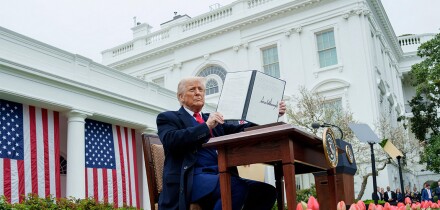
It was no surprise to find Nomura the sole structuring agent on the deal. The bank has led deals for all four of the reverse mortgage securitization issuers, and been involved in virtually every single new deal since the start of 2016.
“We are extremely proud of our securitized product footprint and specifically in the reverse mortgage space,” says Gordon Sweely, head of Nomura’s US securitized products team noted:
“The Waterfall deal clearly illustrates our desire to continually improve our origination partners execution, but at the same time, work closely with our market partners to deliver product that fits their needs. As they say, a win – win.”
In the 12 months running up to Waterfall’s transaction, there were 11 reverse mortgage deals with Nomura either a lead or joint bookrunner on each of them. Nine of those transactions were either non-assignable or assignable and non-assignable combined. CFMT 2020-AB1 was Waterfall’s inaugural securitization of assignable reverse mortgage loans - also known as Assignable Buyouts (ABOs) - and only the second securitization of ABOs ever.
More significantly for the wider market, it was the first ABO securitization to feature a reinvestment period. That 24-month reinvestment period meant that the Waterfall avoids holding assets in bank financing facilities, and can add them directly into the securitization.
“We found an opportunity to improve the efficiency of bank financing facilities,” says Morgan Griff, executive director at Nomura.” They are short-dated, full recourse, marked to market daily, have a high interest expense and a low advance rate. They also come with covenants and ongoing tests.”
By allowing Waterfall to completely bypass these facilities, Nomura’s structuring provides the issuer with a higher advance rate, lower interest rate expense and more duration. Other reverse mortgage issuers like Finance of America have already emulated the revolving period.
This significant step is part of a long process of investor education in which Nomura has been heavily involved. The bank has built the orderbook for reverse mortgage deals from just eight investors in the inaugural 2014 transactions to more than 85 today. That journey spans 28 securitizations across four issuers totalling over $11.5bn. Even so, the unique structure still raised eyebrows among the buyer base.
“Once investors opened the term sheet and presentation they knew immediately it was very different from what had come before,” says Griff. “We took more than 20 calls with investors to walk them through the mechanics and the expectations.”
The deal comprised five classes of notes in total, of which the largest was $247.1m of triple-A notes. The senior class pays current interest and the subordinate bonds are all accrual bonds. This has the advantage of limiting the amount of current interest the issuer pays in each period, allowing for higher advance rates and a lower cost of funds. The Waterfall deal also stood out for having a class of notes with negative credit enhancement that were rated investment grade - in this case triple-B. Griff notes that class of notes was also placed with a third party investor - a first for a securitization backed by active or inactive Home Equity Conversion Mortgage loans.
Yet another tweak to the structure was the proportion of assets that could be reinvested. “There was a precedent deal but only 50% of the collateral cash flow could be reinvested and the reinvestment period was only 18 months,” says Griff. “That precedent deal had to bifurcate the asset pool into two groups. We ensured that 100% of the cash flow Waterfall generated during the reinvestment period could be reinvested - thereby creating more optionality for a longer period of time.”
Finally, Nomura felt it was important to reward investors willing to accept a unique structure giving the issuer unprecedented flexibility. The non-call period was increased to 36 months, compared to just six months in the precedent transaction. The deal was callable at 101 between six and 11 months and freely payable thereafter.
“We thought it was important to provide some balance for investors and temper some of the optionality,” says Griff. “Typically these deals are called in 18 to 24 months. But investors may like the cash flow, the risk, the rating. So we decided that in exchange for supporting some of the optionality available to the issuer, inventors would receive assurance that the bond is going to be outstanding for three years.” GC






